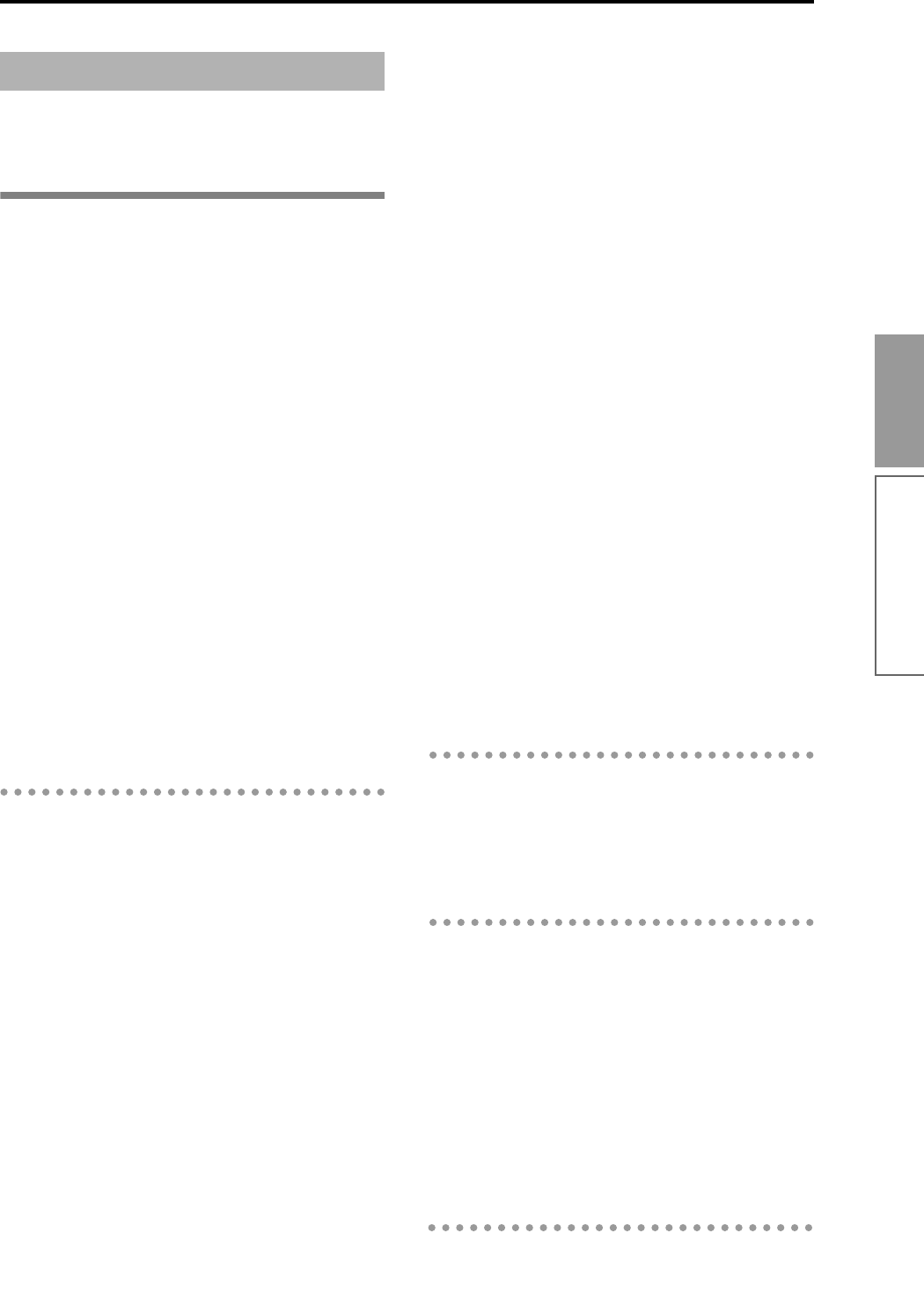
63
Basic functions
The process by which your playing on the TRITON’s
keyboard and controllers is captured on the tracks or
patterns of a song as data is called “recording.”
Recording on a track, and recording
on a pattern
Recording on a track
There are two ways to record on a track: realtime
recording and step recording. You can choose from a
further six types of realtime recording.
In addition, you can use event editing to modify data
that has been recorded or to insert data, and use track
editing operations such as Create Control Data to
insert data such as bend, after touch, and control
changes.
Recording on a pattern
There are two ways to record on a pattern: realtime
recording and step recording. For realtime recording,
only one recording type (loop) is available.
In addition, you can use event edit operations to mod-
ify data that has been recorded or to insert data.
The page menu command “Get From Track” can be
used to take musical data from a desired area of a
track, and use it as the musical data for a pattern. Con-
versely, the page menu commands “Put to Track” and
“Copy to Track” can be used to place or to copy the
musical data of a pattern in a track.
Realtime recording
This is a method of recording in which your playing on
the keyboard and your operations of controllers such
as the joystick are recorded in realtime.
This method of recording is normally used one track at
a time, and is called single track recording.
As an alternative, multitrack recording allows you to
simultaneously record multiple channels of data onto
multiple tracks. This is the method you will use when
using the RPPR function to record multiple tracks of
musical data at once, or when you playback existing
sequence data on an external sequencer and record it
onto the TRITON’s sequencer in realtime (
☞p.64, p.66,
p.73).
• Overwrite
With this method, the musical data previously on
the track is overwritten by the newly recorded data.
When you perform overwrite recording on a previ-
ously-recorded track, its musical data will be
replaced by the newly recorded data.
Normally you will use this method to record, and
then modify the results by using other types of real-
time recording or event editing.
• Overdub
With this method, the newly recorded musical data
is added to the existing data.
When you perform overdub recording on a previ-
ously-recorded track, the newly recorded data will
be added to the previously-recorded data.
It is best to select this method when you wish to add
control data, or to record tempo data onto the mas-
ter track. This lets you record data without erasing
the existing data.
• Manual punch-in
With this method, the musical data previously on
the track is overwritten by the newly recorded data.
While the song is playing, you can press the [REC]
key or a connected pedal switch at the desired loca-
tion to start or stop recording.
• Auto punch-in
With this method, the musical data previously on
the track is overwritten by the newly recorded data.
First you must specify the area that will be re-
recorded. Then playback the song, and recording
will occur automatically at the specified area.
• Loop All Tracks
This method lets you continue recording as you add
musical data.
Recording will occur repeatedly over the specified
area.
• Multi
Multitrack recording allows you to simultaneously
record onto multiple tracks, each with a different
channel. This method can be used with overwrite,
overdub, manual punch-in, and auto punch-in
recording.
Step recording
This is a method of recording where you specify the
note timing, note length, and velocity etc. in the LCD
screen, and use the keyboard to input the pitches.
Only note-on/off data can be recorded with this
method.
Event Edit and Create Control Data
Note data is the only type of data that can be recorded
in step recording. However as ways to record other
types of data outside of realtime, you can use the Event
Edit and Create Control Data functions.
Event Edit is intended as a way to edit previously-
recorded data, but you can also use it to modify pro-
gram numbers or insert control changes.
Create Control Data is a function that lets you create
and insert controller data that changes smoothly
between two specified values over the specified length
of time. This is used to input bend, after touch, and
control change data etc.
Recording
Sequencer mode


















